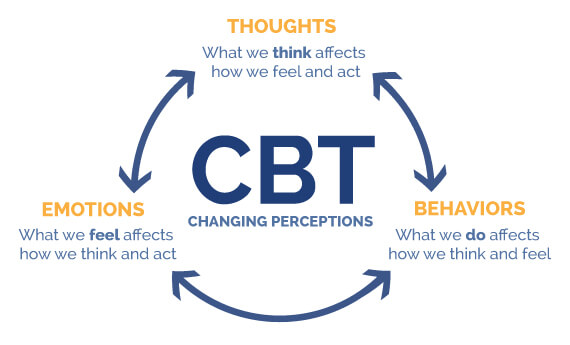Understanding and treating mental diseases including anxiety, sadness, neurosis, obsessions, paranoia, and delusions have historically been the main goals of psychology. Practitioners wanted to assist patients in returning to a neutral or normal condition.
Martin Seligman, a psychologist at the University of Pennsylvania, put forward a new objective for psychology in 1998, nevertheless.
According to him, the sector should also work to advance human flourishing and good well-being in addition to addressing harmful situations.
Seligman called for a shift in focus from “minus five to zero” to “zero to plus five,” according to Seligman.
The American Psychological Association (A.P.A.) asks each newly elected president to select a topic for that person’s one-year tenure in office, Martin Seligman had broad ideas.
He hoped to get a sizable portion of the profession to investigate the region north of zero, to look at what actively made people feel fulfilled, engaged and meaningfully happy.
He reasoned that mental health ought to be more than just the absence of mental sickness; rather, it ought to resemble a vigorous and physically healthy state of the mind and spirit.
A few psychologists had stepped out of the shadowy world of mental disease and into the bright country of the mentally well throughout the years.
For instance, part of Seligman’s own research has focused on optimism, which has been associated with a variety of benefits, including better physical health, a decreased chance of depression and other mental diseases, a longer life expectancy, and, yes, more happiness.
Edward Diener, sometimes known as Dr. Happiness, a psychologist at the University of Illinois, was perhaps the most ardent explorer of this territory. So ever since he received tenure and was able to take the chance of working in an unpopular subject for more than two decades,Diener had been examining what does and does not make people feel satisfied with life. Seligman’s goal was to shine a light on such work and encourage much, much more of it.
Let’s learn more about below points in depth ( tap / click to jump to the respective topic )
3. Can We Get Happier
4. निष्कर्ष
What Makes Us Happy ?
Learn the most recent scientific discoveries on what makes people happy by reading the below scientific studies conducted throughout the years by famous psychologists.
There are more than one may anticipate in addition to a few unexpected aspects.
Financial success?
investigating the research on the relationship between income and life pleasure, including Diener’s findings that more money does not always make you happier after covering your fundamental necessities
a quality education?
Happiness is not paved with knowledge or, for that matter, a high IQ ( Intelligent Quotient ).
People with higher EQs ( Emotional Quotient ) tend to have better mental and emotional health and are more likely to feel happy or other pleasant feelings, this is proven by multiple researches as well.
Those with greater EQ have more effective stress-coping strategies and are better able to form and maintain healthy relationships, both of which can contribute to overall happiness. This is proven by numerous studies conducted.
Youth?
older adults tend to have more overall well-being and are less prone to feel negative emotions than younger people, according to research on age and life satisfaction.
Those aged 20 to 24 experience sadness on average 3.4 days a month, compared to people aged 65 to 74 who experience it on 2.3 days; this is observed by Centers for Disease Control and Prevention polls.
Marriage?
Study how marriage and happiness interact in complicated ways.
In general, married individuals are happier than single people, however it’s possible that’s because they were happy to begin with.
religious belief?
Learn how spirituality and religion affect mental health.
There is conflicting evidence about whether or not religious or spiritual pursuits boost happiness, but it’s unclear whether it’s the connection to a higher power or the sense of community that is most impactful.
Friends?
Examine how vital social relationships are to one’s overall wellbeing.
A Diener and Seligman study from 2002 at the University of Illinois observed below, the most notable traits shared by the 10% of students who reported the highest levels of happiness and the fewest signs of depression were their close relationships with friends and family and commitment to spending time with them.
Diener says, “Word needs to be shared. In order to be happy, it’s critical to concentrate on developing strong interpersonal relationships, social support, and social skills.
Professor of happiness studies at Erasmus University in Rotterdam, Ruut Veenhoven, is a wellspring of such cheery information.
He oversees the Global Database of Happiness, a vast repository of research, and edits the Journal of Happiness Studies.
People are happiest in jobs that afford a certain amount of freedom and decision making power.
After working in the field for 25 years, Veenhoven has concluded that happiness is “how much you like the life you are living. People can live in paradise and still be unhappy because they screw up everything in their lives”
Measuring Our Moods
Since that happiness is subjective and can vary even among those who are the happiest, measuring it can be difficult for social scientists. Researchers have created a variety of assessment techniques to get around these challenges. The Diener Satisfaction with Life Scale, a five-question survey, is one frequently used instrument. Studies have found that, despite some critiques of its simplicity, it correlates favourably with various measures of happiness, including approval from friends and family, pleasant emotions, and low levels of depression.
Visit the Tools area and look for “Measure Your Happiness” ( TBD )
In his approach to studying happiness, Seligman focuses on how memories affect our feeling of overall wellbeing.
According to Seligman, memories play a more significant role in shaping our identity than our current experiences.
Seligman contends in his 2002 book “Authentic Happiness” that happiness is a deeper and more complicated idea than momentary pleasure or displeasure.
Seligman outlines three essential elements of pleasure based on his research:
Pleasure ( The happy face piece ) ( The smiley face piece )
Engagement (the level of commitment to one’s relationships, career, and interests)
Meaning ( utilising personal skills to serve some large aim ) ( using personal strengths to serve some large end )
He contends that out of the three, pleasure is the least significant and that engagement and meaning are considerably more necessary for living a happy, fulfilling life.
This is significant since many Americans favour pleasure-seeking over other things in their life.
Can We Get Happier
How much control we have over our own happiness is a dilemma for happiness studies.
David Lykken ( researcher at the University of Minnesota ) released a study on the influence of genetics on life happiness in 1996.
According to Lykken’s analysis of data on 4,000 pairs of twins born in Minnesota, genetics account for around 50% of happiness.
Just around 8% of the variance is explained by contextual variables including wealth, marital status, religion, and education.
“Life’s slings and arrows” are said to be responsible for the remaining 10%. This study emphasises the significance of comprehending how genetics affect happiness as well as the limited effect of outside influences.
According to David Lykken, a researcher at the University of Minnesota, each person has a “happy set point,” similar to our set point for body weight, because of the significant effect of our genes.
He formerly believed that trying to make other people happy was meaningless, but he has now had a shift in perspective and believes that it is possible to do so.
This point of view is in line with the positive psychology movement, which places an emphasis on how to improve life’s enjoyment, engagement, and significance in order to boost happiness.
With the help of funding from the National Institutes of Health, Sonja Lyubomirsky ( a psychologist at the University of California, Riverside ) is studying ways to make people happier.
The gratitude diary, in which people record their thankfulness, is one of the strategies she is studying.
According to Lyubomirsky’s research, continuously maintaining a thankfulness diary once a week over the course of six weeks can considerably boost general life satisfaction in comparison to a control group that did not keep journals.
Exercises in gratitude have been discovered to offer advantages beyond simply improving one’s mood.
Robert Emmons ( a psychologist at the University of California, Davis ) found that thankfulness exercises does enhance physical well-being, boost energy, and even relieve pain and fatigue in patients with neuromuscular diseases.
According to Emmons’ research, those who express their gratitude in more detail and have a larger variety of reasons to be thankful tend to reap the greatest rewards.
According to positive psychologists, being nice and helpful to others might increase happiness.
Doing good for others tasks can be visiting a nursing home, assisting a friend’s child with their schoolwork, mowing a neighbor’s lawn, or writing a letter to a grandmother are some examples.
According to Sonja Lyubomirsky’s research at the University of California, Riverside, carrying out five deeds of kindness every week—especially in a single day—can deliver a considerable boost in general life satisfaction.
According to research by University of Pennsylvania psychologist Martin Seligman, practising gratitude interventions—such as sending a letter of thanks to someone you owe a debt of gratitude to and visiting them to read it—can considerably improve happiness. He refers to this as a “gratitude visit” and discovered that even carrying it out only once might have quantifiable positive effects on happiness and despair one month later. Nevertheless, the result is just fleeting. Less effective but longer-lasting, his “Three Blessings” practise has been shown to reduce sadness and improve happiness even three and six months after it is completed. It entails writing down three things that went well and why each day.
According to University of Pennsylvania psychologist Martin Seligman, finding and using one’s abilities is the secret to finding permanent pleasure.
He and his University of Michigan colleague Christopher Peterson have concentrated on finding and describing human qualities and traits including zest, humour, and generosity and their relationship to happiness.
Seligman’s study indicates that interpersonal virtues such as kindness, gratitude, and the capacity for love are more strongly linked to happiness than intellectual virtues such as curiosity and a desire to learn.
Gratitude, kindness, and other virtues, according to positive psychologists, can boost happiness. These characteristics are said to provide people a feeling of self-worth and detach them from their own existence, which can be advantageous. Also, putting these values into practise can give one a feeling of purpose since they make them feel important to other people. Interventions in positive psychology aim to increase a person’s sense of interpersonal connection.
निष्कर्ष
Heaven Will Wait
According to Ruut Veehoven, a professor of happiness studies at Erasmus University in Rotterdam, you may be unhappy in paradise.
The key to happiness is appreciating your life and making progress towards your intended goals.
Social connection is one of the most crucial elements in general wellbeing, according to happiness science.
According to Mihaly Csikszentmihalyi, “Most individuals feel happy when they are alongside other people.”
Even though many individuals prefer to be by themselves and believe they have nothing to do, it may seem counterintuitive. Polls have proven that this can have an adverse effect on your general well-being.
Always remember that social connection plays an important role in human happiness and well-being.
Acts of kindness and gratitude journaling are examples of positive psychology therapies that have been found to improve general happiness and well-being. Other people, however, are sceptical about these techniques’ capacity to alter ingrained personality qualities like pessimism or introversion.
Sonja Lyubomirsky, a researcher in the area, thinks that people may alter their habits and thinking over time if they put up persistent effort and dedication. She underlines that certain tactics may develop into habits over time by drawing a comparison to the daily dedication to a regular workout programme.




